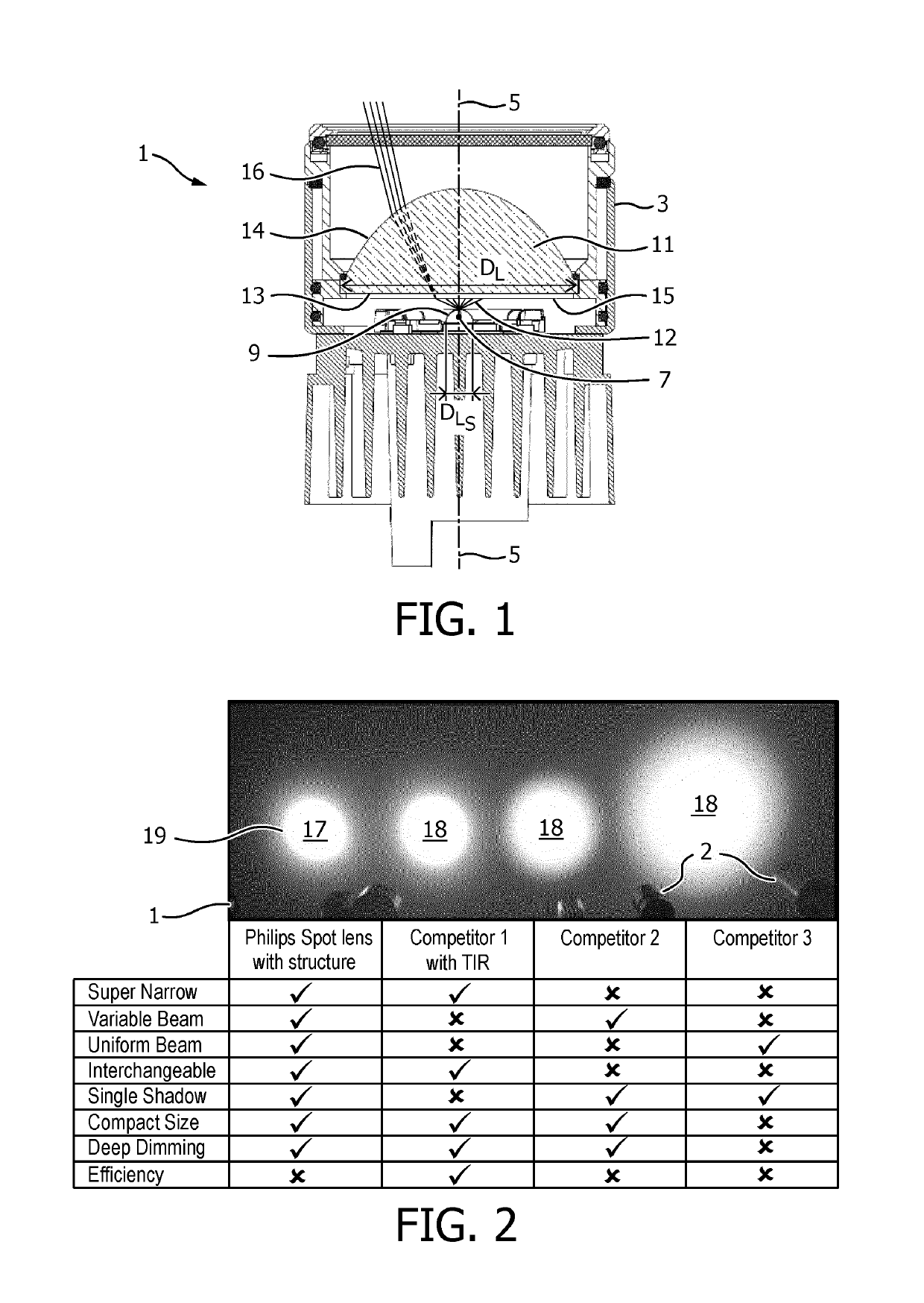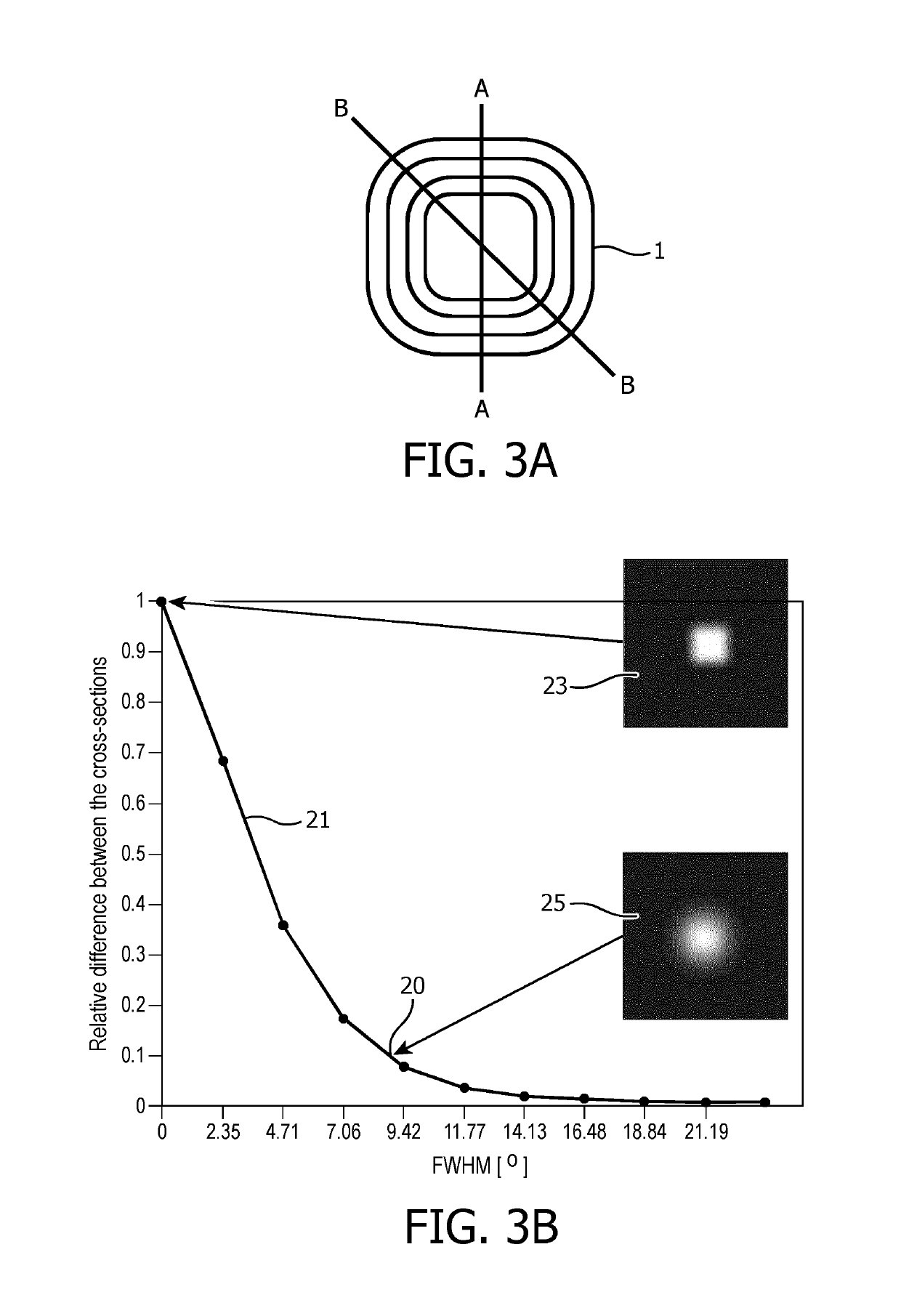Lighting device, lens and method, having a mixing structure with a variable blurring strength
a mixing structure and light source technology, applied in the field of light source devices, can solve the problems of reducing the sharp cut-off of the beam edge, limiting the beam width control range of the lighting device, etc., and achieve the effects of reducing optical aberration, broadening the incoming beam, and increasing vagueness
- Summary
- Abstract
- Description
- Claims
- Application Information
AI Technical Summary
Benefits of technology
Problems solved by technology
Method used
Image
Examples
Embodiment Construction
[0049]FIG. 1 shows a cross-section of a first embodiment of a lighting device 1 according to the invention. The lighting device comprises a housing 3 centrally arranged around an optical axis 5 and accommodates a light source 7 centrally mounted on the optical axis. The light source in the figure is a LED comprising a dome 9 with a diameter DLS of about 1 cm, the LED issuing a primary light beam 12. The housing further comprises a glass lens 11, i.e. LIBA 2000, centrally mounted on the optical axis and having a lens diameter DL of about 7 cm and being moveable with respect to light source along and / or over the optical axis. The lens has a light entry surface 13 and a light exit surface 14, the light entry surface is provided with a mixing structure 15 having a bluffing strength of about 4.5° FWHM, the bluffing having a Gaussian distribution. The lighting device issues a secondary light beam 16.
[0050]FIG. 2 gives an impression of beam spots of and properties of secondary beams as obt...
PUM
 Login to View More
Login to View More Abstract
Description
Claims
Application Information
 Login to View More
Login to View More - R&D
- Intellectual Property
- Life Sciences
- Materials
- Tech Scout
- Unparalleled Data Quality
- Higher Quality Content
- 60% Fewer Hallucinations
Browse by: Latest US Patents, China's latest patents, Technical Efficacy Thesaurus, Application Domain, Technology Topic, Popular Technical Reports.
© 2025 PatSnap. All rights reserved.Legal|Privacy policy|Modern Slavery Act Transparency Statement|Sitemap|About US| Contact US: help@patsnap.com



